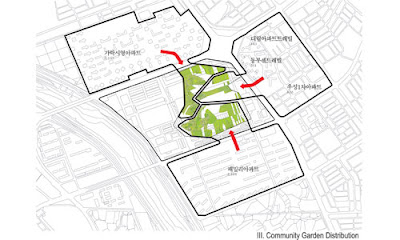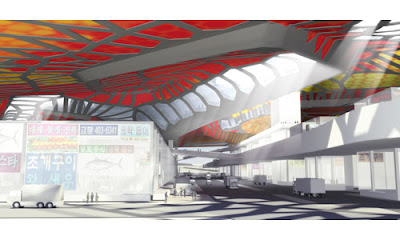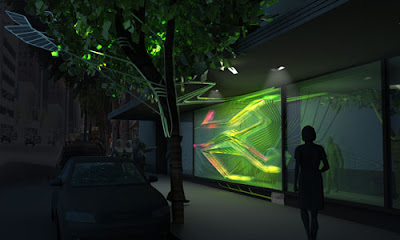These three prototypes are a family. They are combinatorial in nature, fusions of diverse systems and services which generate emergent architectural behaviors and features. They are part of recent research in the office concerned with unpacking the spatial and ornamental potentials of airflow, fluid flow, and glow, often considered to be ‘minor’ forces in architecture. Based on chunk logic rather than layer logic, these prototypes are intended to manufactured and delivered as fully integrated three-dimensional assemblies embedded with all internal infrastructural systems. They are to be constructed of formed fiber composite and polycarbonate materials assembled with socket connections and structural adhesive, as well as more common materials such as plate steel and acrylic pipe. They feature integrated thermal solar systems, PV systems, algae photo-bioreactor coils, radiant cooling systems, and grey water capture systems.
PROTOTYPE I: Tracery Glass Tracery Glass reconsiders glass and transparency in architecture. In contrast to modern dreams of dematerializing glass and framing perfect views, this glass is not only not glass (it’s polycarbonate), it is highly characterized by embedded technology which is simultaneously operative and ornamental. It allows views, but through layers of light, cooling coils and fins, solar surfaces, and gradient color patterns. Ultimately, this is an exploration the contemporary relevancy of stained glass and other types of figural transparency from centuries past, and possible crossovers with contemporary energy technologies.

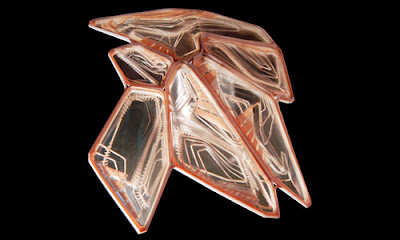

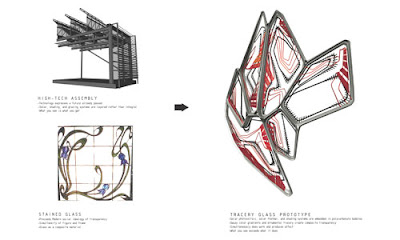

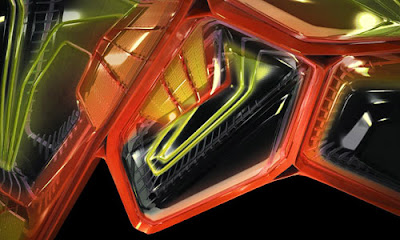

PROTOTYPE II: Thermo-Strut This prototype intertwines low-res steel plate beams with a fiber composite shell embedded with solar thermal technology. The solar thermal system is a continuous loop which weaves around through the steel sections, forcing structural adaptations at intersections. In armature conditions, the solar thermal system receives sun exposure through transparent apertures, while in surface conditions, it changes behavior and spreads out as patterns of relief. The result is a prototype which organizes structural forces, fluid flows, and material properties into a tectonically coherent, yet ornamental assembly. This prototype is intended to take ‘surface-to-strand’ geometries to the next level, where disciplinary forces temper abstract formal sensibilities.
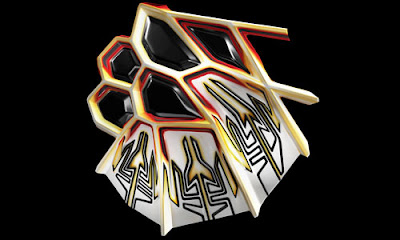
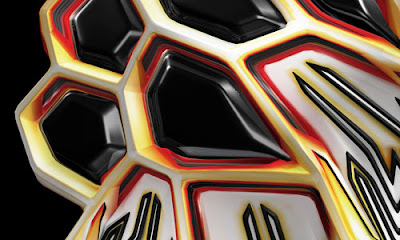


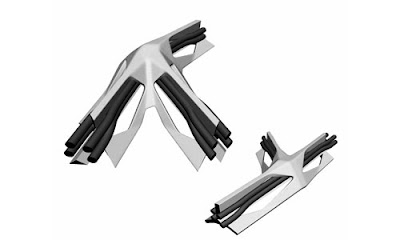

PROTOTYPE III: Lizard Panel Lizard Panel is a unitized system with puzzle-piece components and socketed structural and mechanical members for continuity. It is characterized by a lacy, meandering pattern of algae bioreactor pipes for energy generation as well as deep channels which reclaim grey water from rainfall for use inside the building. This prototype is the most overtly biomimetic: it capitalizes on characteristics of the Agamid Lizard, which siphons moisture from its back to its mouth via deep channels in its skin. Algae and grey water systems are not simply adjacent, but rather interwoven in such a way that structural behavior arises-- grey water channels become the bottom ‘flange’ to the upper ‘flange’ of the algae channels, while interstitial webbing connects the two into a hybrid beam morphology.

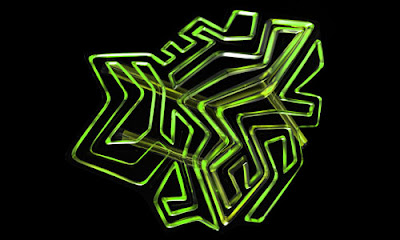



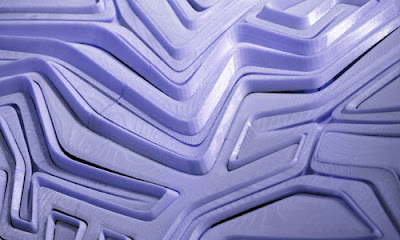
Prototypes I-III: Tracery Glass, Thermo-Strut, Lizard Panel
Prototype, 2009
Building Type:Building systems hybrid
Office: EMERGENT
Principal: Tom Wiscombe
Project Team: David Stamatis, Bin Lu, Chris Eskew, Ryan Macyauski, Cody Derra, Katsuya Arai, Eugene Park
All pictures Copyright © 2009 EMERGENT







